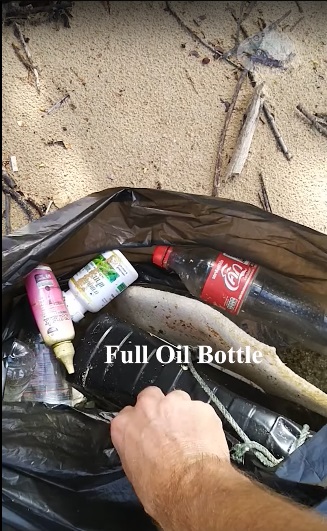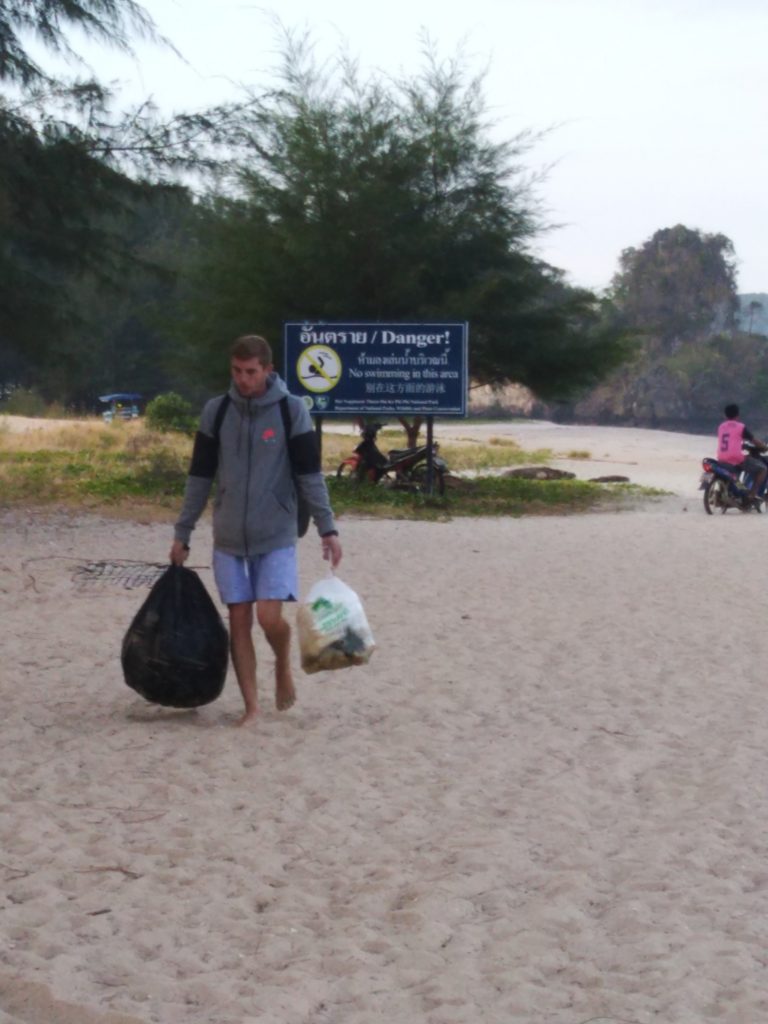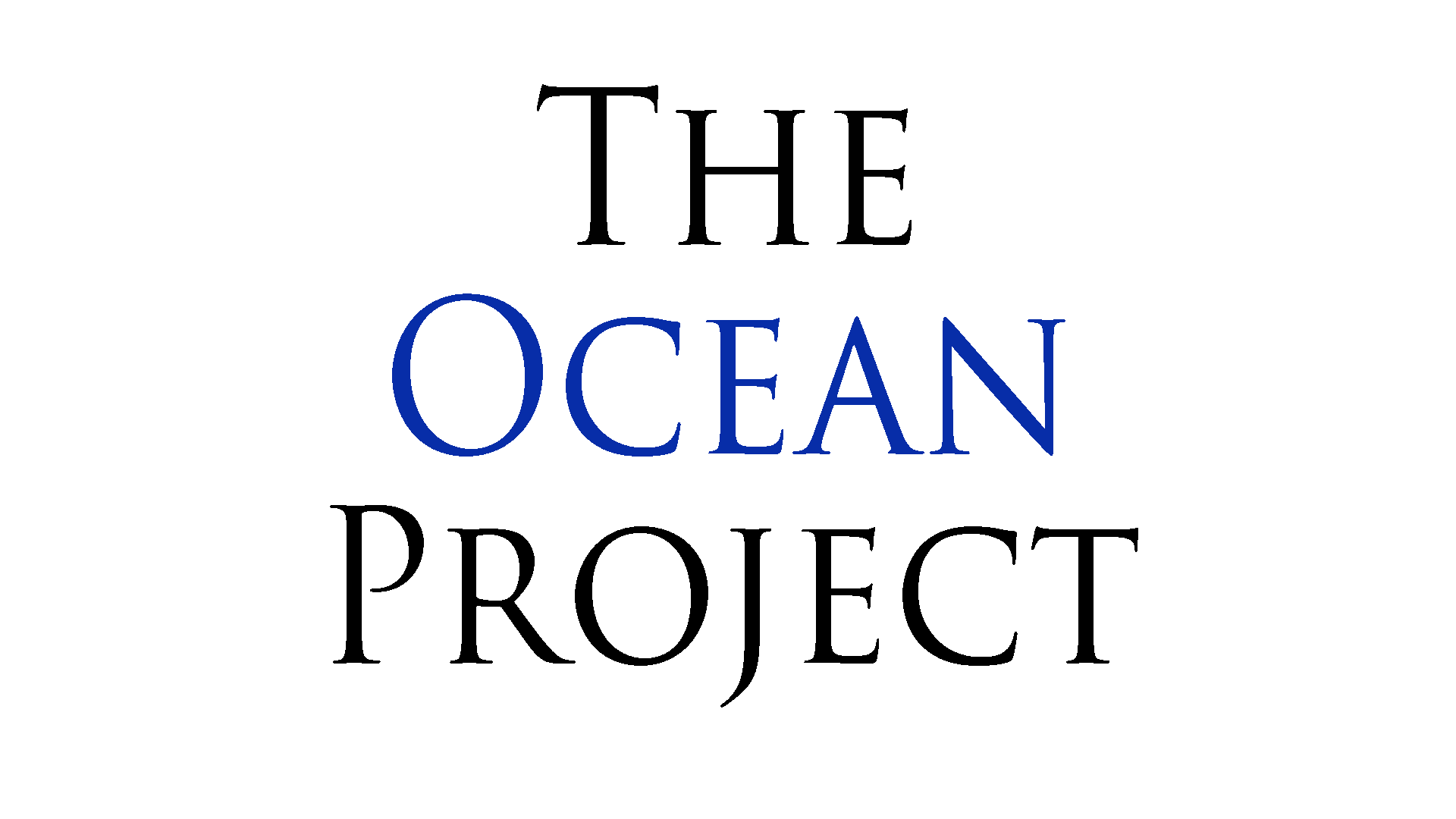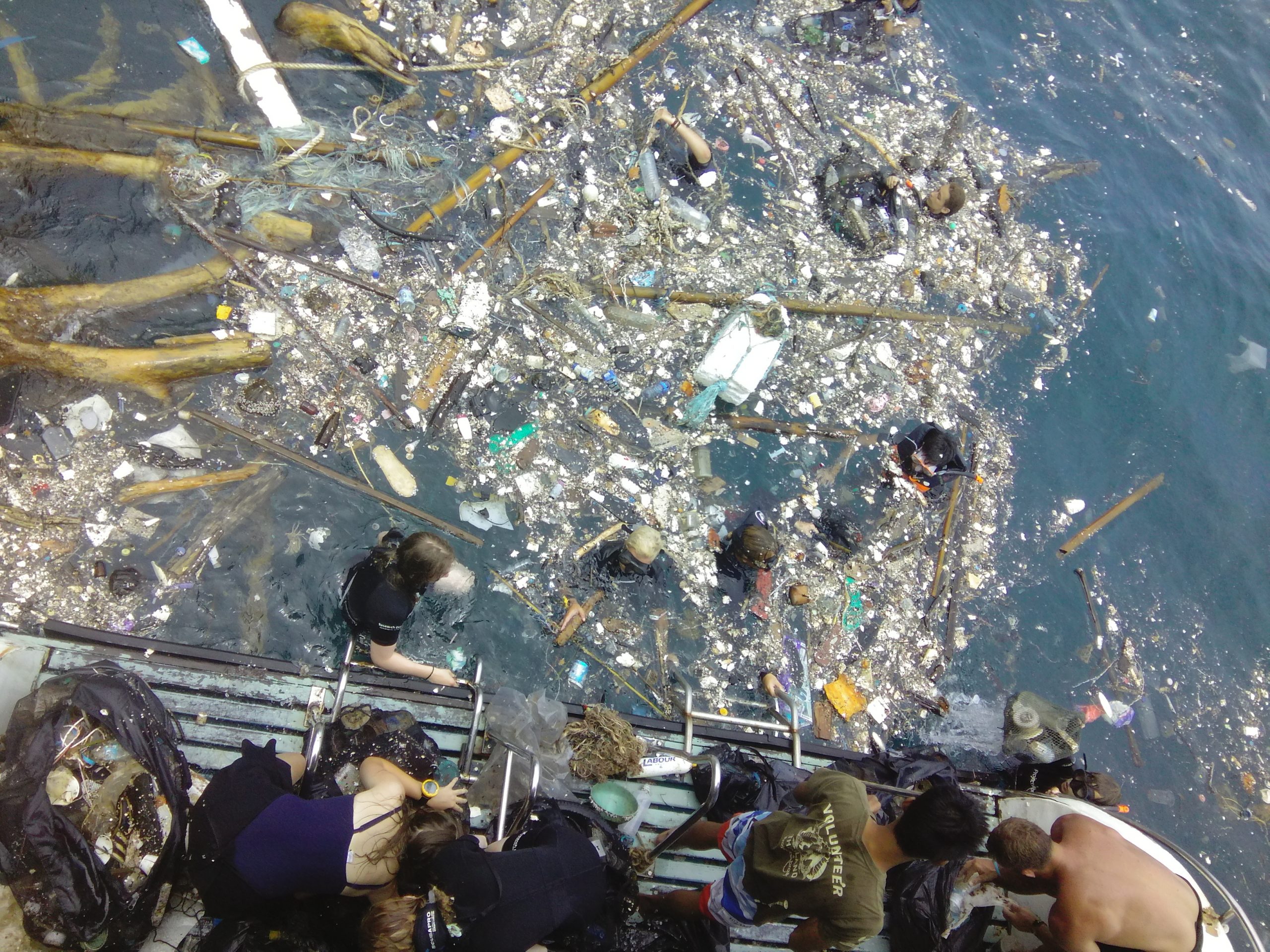Why is microplastic a silent killer? What is microplastic and how is it formed?

Our plastic production and consumption of single-use plastic per year is unimaginable.
Plastic is light, versatile and cheap to come by, but it poses major problems for nature.
Plastic is omnipresent and it is hard to imagine our everyday lives without it. We use plastic in all sorts of life-saving medical devices, in packaging, clothing, toys and cosmetics as well as in industrial and agricultural products.
In the 1950s, almost 1.5 million tons of plastic were produced per year, today it is almost 400 million tons. And far too much of it ends up in our Oceans. About 75% of all marine debris is plastic.
Between the years 1950 and 2015 worldwide 8.3 BILLION TONNES OF PLASTIC was produced. This corresponds to more than one ton per person.
There is reusable plastic e.g. as bento boxes, stainless steel coffee cups, plates and cutlery. That lasts a long time, can be reused and is also recyclable.
Plastic that is thrown away immediately after it has been used is called single-use plastic and is one of the worst types of pollution.
Most types of plastic can be recycled. Nevertheless, there are also many types of plastic that are not recyclable. e.g. PET bottles, the bottles made of polyethylene can become bottles again, but PET trays used for packaging fruit are not recycled.
Foils are also difficult, especially smaller ones: Up to now, there have only been a few systems in place. And burning is cheaper than recycling. By 2019, only 36 percent of plastics in Germany had to be recycled. The quotas were increased in 2019, and by 2022 63% of all plastics are to be recycled.
In Germany too, more than half of all plastic products are incinerated. But that doesn’t get rid of the garbage by a long shot. Depending on the type of combustion, numerous toxins are produced that are hardly broken down by the environment. Those toxic left overs have to be stored somewhere too. Waste incineration (also called thermal waste treatment or recycling.)

Manufacturers often do not want to use recyclates, i.e. recycled plastic, because it has a gray tone to it instead of bright white, for example.
Coca Cola is the #1 single-use plastic bottle Producer 88.000.000.000 globally a year. That corresponds to 167.000 bottles per minute.
According to current estimates, about 40% of plastic products are waste in less than a month. This ever-growing mountain of plastic waste is causing serious environmental problems.
The recycled material is of lower quality than the original material. If, for example, disposable PET bottles are contaminated, it may not be possible to produce a new bottle from the recyclate, but only lower-quality polymer fibers for the textile industry, which cannot be recycled again.

Less than 10% of all plastic ever produced has been recycled.
In the EU, an estimated 42% of plastic packaging waste was recycled in 2017. In seven EU Member States, more than half of the plastic packaging waste generated was recycled in 2017.
In Germany, of the 5.2 MILLION TONNES of PLASTIC WASTE generated in 2017, just 810,000 tons were recycled.
This corresponds to a rate of 15.6 percent.
The third largest plastic waste exporter after the USA and Japan is Germany, whereby after the import ban imposed on China in 2018, it is now being exported to Malaysia and “disposed of” there under far fewer conditions. Many of the countries there have no or only insufficient waste disposal systems. The plastic waste ends up in the environment and above all in our Oceans.
How much plastic waste is floating in the oceans? A current estimate of the global input of plastic waste into the oceans is between 4.8 and 12.7 million tons per year.
That is equivalent to one truckload every minute.

10 to 20 years. That’s how long it takes a shopping bag in the sea to completely decompose. It is even more drastic with the PET bottle: it takes around 450 years for plastic bottles to decompose in water these kind of plastics actually never decompose completely they just sink to the seabed in the form of microplastics. Dealing with waste is one of the most important environmental issues worldwide – and microplastic waste, which is difficult or impossible to degrade, is playing an increasingly important role.
Over time, large pieces of plastic break down into pieces so small that they are invisible to the naked eye and cannot be removed from the ocean. These pieces are called microplastics.
There are many ways for garbage and plastic to enter the oceans. If garbage is not properly disposed of, it can be washed into rivers by rain or wind. Rivers usually end in the seas.
Via wastewater where the microplastics cannot be filtered out. Cosmetic items often contain microplastics. Shampoo, toothpaste and detergent also contain microplastics.
Also, illegal waste disposal in rivers and seas is often simply operated “out of sight out of mind” so to speak, unfortunately it will all come back to us.
Microplastics are formed when the plastic is exposed to external factors such as pressure, sun, heat, cold, UV rays, abrasion, rain, chemicals and natural decomposition.

Many marine animals mistake microplastics or larger pieces of plastic for food and eat them. However, plastic can only be digested very little or not at all and is either excreted or remains stuck in the digestive tract where it accumulates over several years and eventually clogs the stomach and the animals die of starvation because they can no longer eat properly.
If the microplastic is small enough, it’ll be stored into the flesh and tissue.
It’s shocking to see that every fish we find dead underwater is taken away and dissected and we’ve found plastic bits in the stomachs of every animal so far without exception. Some just big enough to see under a microscope others filled with whole plastic bags like this green turtle we found dead floating on the water.
Knowledge of microplastics in the oceans is widespread. What few know:
Depending on the environment, soil and inland water pollution is between 4 and 23 times higher than in the Oceans.
So our crops also suffer and not only that, because the feeding of our livestock is also affected by microplastics.
Microplastics move into our food chain.
It has been proven that microplastics are already exist in our food and drinking water. How does this microplastic get into our food chain? Here, too, accumulations via marine animals and in drinking water play the greatest role, and the smallest particles are also absorbed through breathing.
So far it has not been proven that microplastics have a negative effect on our health, but one can well imagine that health problems will develop in the near future due to the increased production of plastic hence more Microplastics. The health consequences of microplastics for humans remain hidden, but some health risks from the extraction of raw materials to the disposal of the plastic are known!
The life cycle of many plastic products starts with oil or natural gas. During production, especially in the controversial fracking process, toxic substances are released into the air and water. More than 170 fracking pollutants are suspected of causing cancer, causing reproductive and developmental disorders or damaging the immune system. Also there is the unknown of long-term damage to nature and drinking water pollution, as this method is still very new and there is no experience available yet.
Microplastic was detected in human blood for the first time, with scientists finding the tiny particles in almost 80% of the blood samples tested. The discovery shows the tiny particles can travel around the body and may lodge in organs.
22 anonymous blood sample from donors have been analyzed, all healthy adults, plastic particles was found in 17.
50% of the samples contained PET plastic, which is used in drinking bottles, while
30% contained polystyrene, used for packaging food and other products.
20% of the blood samples contained polyethylene, from which plastic bags are made.
Further studies are needed as the amount and type of plastic varied considerably between the blood samples!
So where do you start as an individual to reduce microplastics?
Start where it makes the most sense.
- Do not buy wrapped goods but open goods instead
- Go to a farmers market instead of the grocery store.
- Bring your own bag with you when you go shopping
- Use reusable bottles
- Use a stainless steel coffee mug
- Pack your lunch in a bento box!
- Say no to straws and plastic cutlery!
- Bring your reusable plastic boxes to the restaurant to pack the “to go food”, even the restaurant saves money.
- Store leftovers in mason jars.
- Use natural products in the hygiene area without microplastics
- When cleaning, use sponges made from natural raw materials
- Organize Cleanup Days in your community
- Pick up big pieces of plastic trash on your next walk, so they don’t transfer into microplastic. And obviously any other rubbish you’ll find on the way.
- Dispose of and separate your rubbish properly
- Spread the word and share!

Zero waste Lifestyle
Reusable Products
On this page we present to you our recommended
products to contribute to a zero waste lifestyle
Recycling plastics will definitely not be enough, more solutions need to be found. Gradually, more and more municipalities and cities are becoming active and are contributing to the fact that plastics are not even available on the market or bought in. Packaging and plastics as well as products and materials are responsibly produced, consumed and recycled. No rubbish is burned. Pollutants do not enter the soil, water or air.
Municipalities can thus keep the environment intact, consume sustainably and create new jobs.
Caution! word confusion “Bio”-plastics are not a solution because once again it is not what it actually describes, namely “Bio”.
You have to distinguish between two types “biomanufactured plastics” and “biodegradable plastics”.
Biomanufactured plastics from renewable raw materials have a reputation for being environmentally friendly. Also, they degrade faster. That’s the promise of the industry. A closer look shows that the materials create new problems.
The word “Bio” comes from the alternative to crude oil, where sugar cane or corn is used as the basis for plastic production, renewable raw materials are already being used today. However, if the plastic is made as hard and durable as possible, it can also be difficult to break down and needs a long time to do so.
Especially when growing sugar cane and corn, which is used as a raw material, large amounts of pesticides and water are used and grown as monocultures, which is bad for the soil as well as for biodiversity.
It is always better to prevent than to correct!
However, we still have to do some follow-up work at the moment. In the pictures you can see some of our efforts to clean up plastic both in the sea and on the beach. Ocean surface cleaning and beach cleanups are part of our marine conservation projects that we carry out regularly!











Despite all the problems we have in our oceans with plastic, garbage pollution, acidification overfishing abandoned fishing nets, I still believe we can save and restore our precious oceans! We just have to work together!
However, the work is hard, tedious and exhausting and we need all the help we can get! Every little gesture counts, It doesn’t matter how you help us, if you
- share our content
- join us as a Volunteer for Ocean Conservation
- Donate or
- Buy our underwater NFT images
- All proceeds go to our marine conservation

We need
- More ocean cleaning teams
- More people becoming aware of the situation.
- More people to take care of our future source of food and oxygen, the oceans
- Donations
- Boats
- Fishery controls
- More natural scientists
So what is the solution to this problem and how can you as an individual contribute to the marine conservation program?
- Only buy fish once a week (not 5 times).
- Know where and how the fish was caught and if it was caught from sustainable resources? https://www.mcsuk.org/goodfishguide/search
- Switch to a more plant-based diet
- Lower your own standards. Maybe the smaller car will do too.
- Turn off the water while soaping in the shower.
- Turn off the lights that are not needed, Light pollution is another problem for many animals.
- Leave your car at home and go for a walk or bike instead.
- Don’t drive to the gym to sit on a bike!
- Don’t throw your trash overboard or out of the car onto the side of the road. it will eventually land in the oceans. Teach others!
- If you must use plastic, look at reusability.
- Bring your own bag to shop.
- Don’t eat shark fin soup
- Do not feed fish in the open sea.
- Check out our recommended documentaries
- Become a marine conservation program volunteer for marine life conservation and our marine conservation program.
- Join our ocean cleaning team
- Support us with a donation
- Become a Patreon
- Buy one or more of our NFT images which provide our Conservation efforts with funding!
What do we do for the Marine Conservation Program?
- Teaching and raising awareness for our divers and guests!
- We sell our best of underwater pictures and promotional items; All proceeds go to our marine conservation projects and our ocean cleanup team! Visit our website and support us with your donation
- Building of artificial reefs, because they not only protect the fish from fishing nets, but fish also reproduce faster, and corals can attach themselves to the structures more easily.
- Wildlife and Turtle rehabilitation and rewilding
- Reforestation of corals broken off by anchors and/or humans.
- Coral propagation project
- Setting permanent buoys so that boats no longer anchor in the reef and thereby break off corals
- Underwater Cleanup dives
- Ocean surface garbage cleaning
- Beach cleanup
- We have just started a new shark protection project
- Fight to enforce fishing laws and prevent illegal fishing.
You might also be interested in:
We hope you enjoyed our Article about Microplastic and if so, please share the article with your friends and family or on your social platforms and leave us a comment below we would appreciate it a lot and you’d make the Oceans a little better! Thank you!
If you don’t want to miss any of our next articles you can sign up here for our free newsletter!
You’d like to support us in our marine protection projects, but don’t have much time?
Rescue the Ocean with your Purchase!
All income goes towards our Marine Life Conservation Projects!
Have a look at our merchandise!
Interested in joining us as a Marine Life Conservation Volunteer?
Check it out here
Another way to help us is with your donation or buy one of our merchandise items. All income from the Items sold goes to our Marine Life Conservation Projects.
You can now Donate in Cryptocurrency to support our Marine Life Conservation Projects
Are you interested in Scuba Diving? Come Join us at Poseidon Dive Center and do a Dive Course or Join us for a FunDive as a certified Diver.






